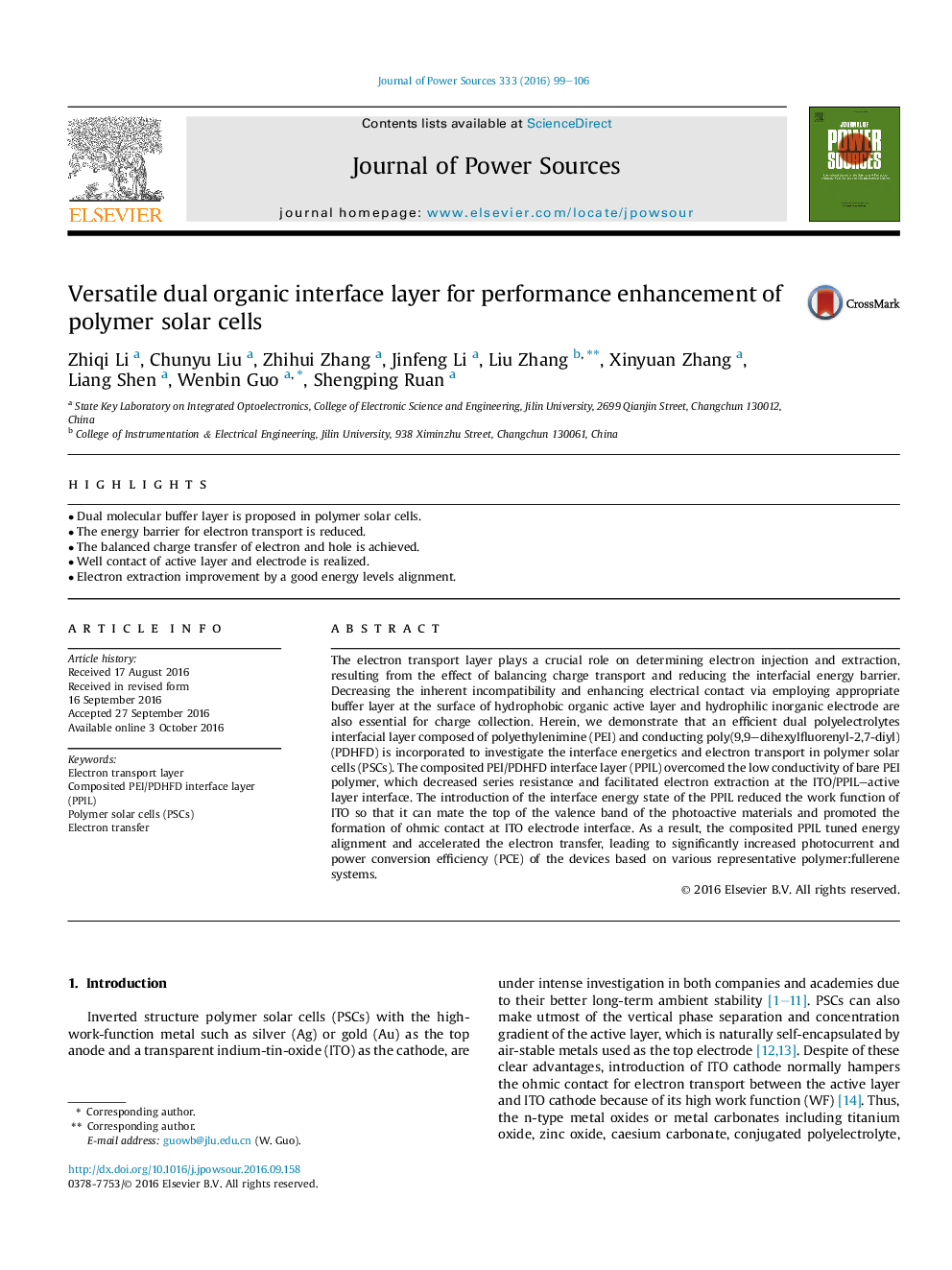| Article ID | Journal | Published Year | Pages | File Type |
|---|---|---|---|---|
| 5150073 | Journal of Power Sources | 2016 | 8 Pages |
Abstract
The electron transport layer plays a crucial role on determining electron injection and extraction, resulting from the effect of balancing charge transport and reducing the interfacial energy barrier. Decreasing the inherent incompatibility and enhancing electrical contact via employing appropriate buffer layer at the surface of hydrophobic organic active layer and hydrophilic inorganic electrode are also essential for charge collection. Herein, we demonstrate that an efficient dual polyelectrolytes interfacial layer composed of polyethylenimine (PEI) and conducting poly(9,9-dihexylfluorenyl-2,7-diyl) (PDHFD) is incorporated to investigate the interface energetics and electron transport in polymer solar cells (PSCs). The composited PEI/PDHFD interface layer (PPIL) overcomed the low conductivity of bare PEI polymer, which decreased series resistance and facilitated electron extraction at the ITO/PPIL-active layer interface. The introduction of the interface energy state of the PPIL reduced the work function of ITO so that it can mate the top of the valence band of the photoactive materials and promoted the formation of ohmic contact at ITO electrode interface. As a result, the composited PPIL tuned energy alignment and accelerated the electron transfer, leading to significantly increased photocurrent and power conversion efficiency (PCE) of the devices based on various representative polymer:fullerene systems.
Related Topics
Physical Sciences and Engineering
Chemistry
Electrochemistry
Authors
Zhiqi Li, Chunyu Liu, Zhihui Zhang, Jinfeng Li, Liu Zhang, Xinyuan Zhang, Liang Shen, Wenbin Guo, Shengping Ruan,
